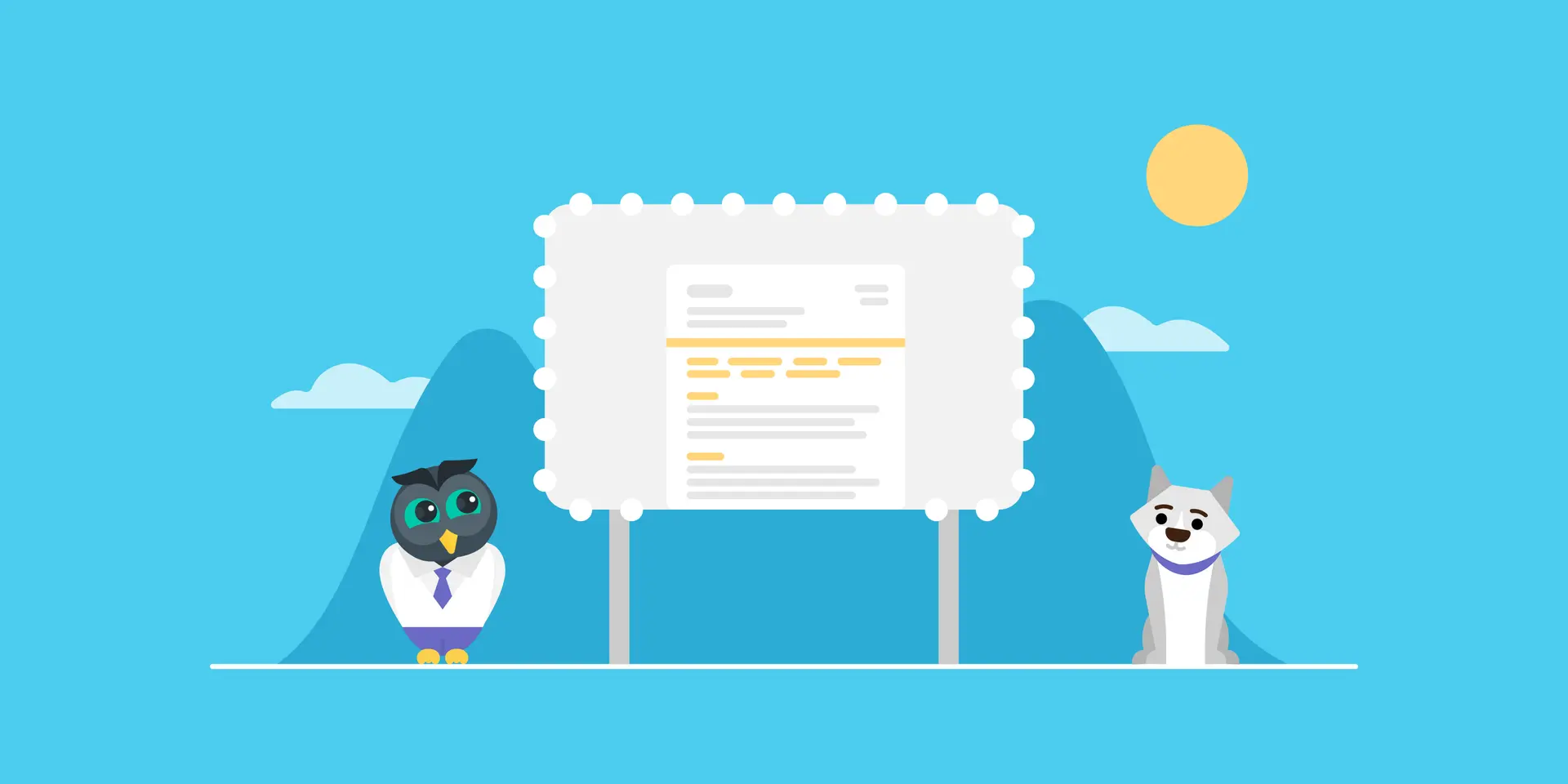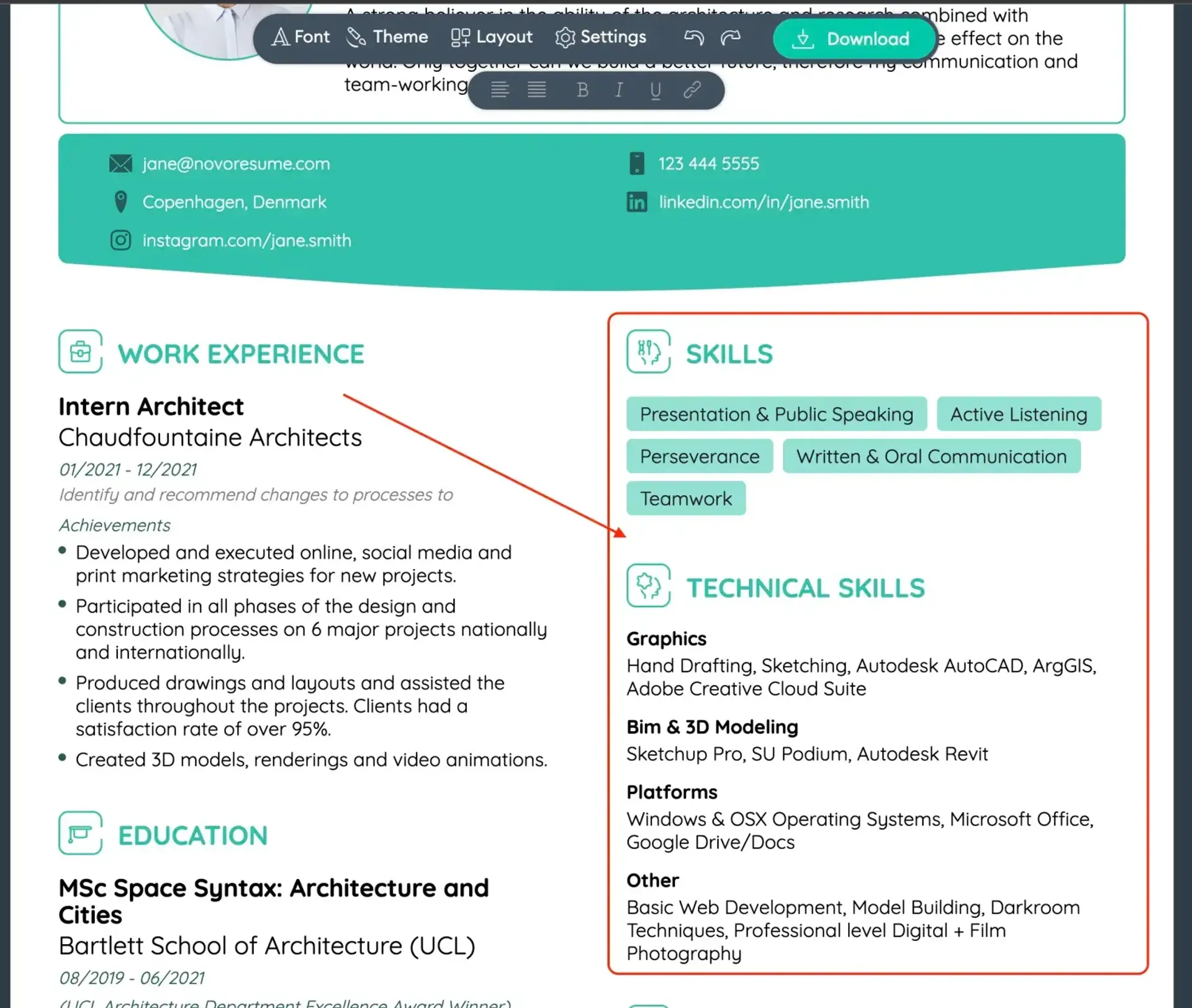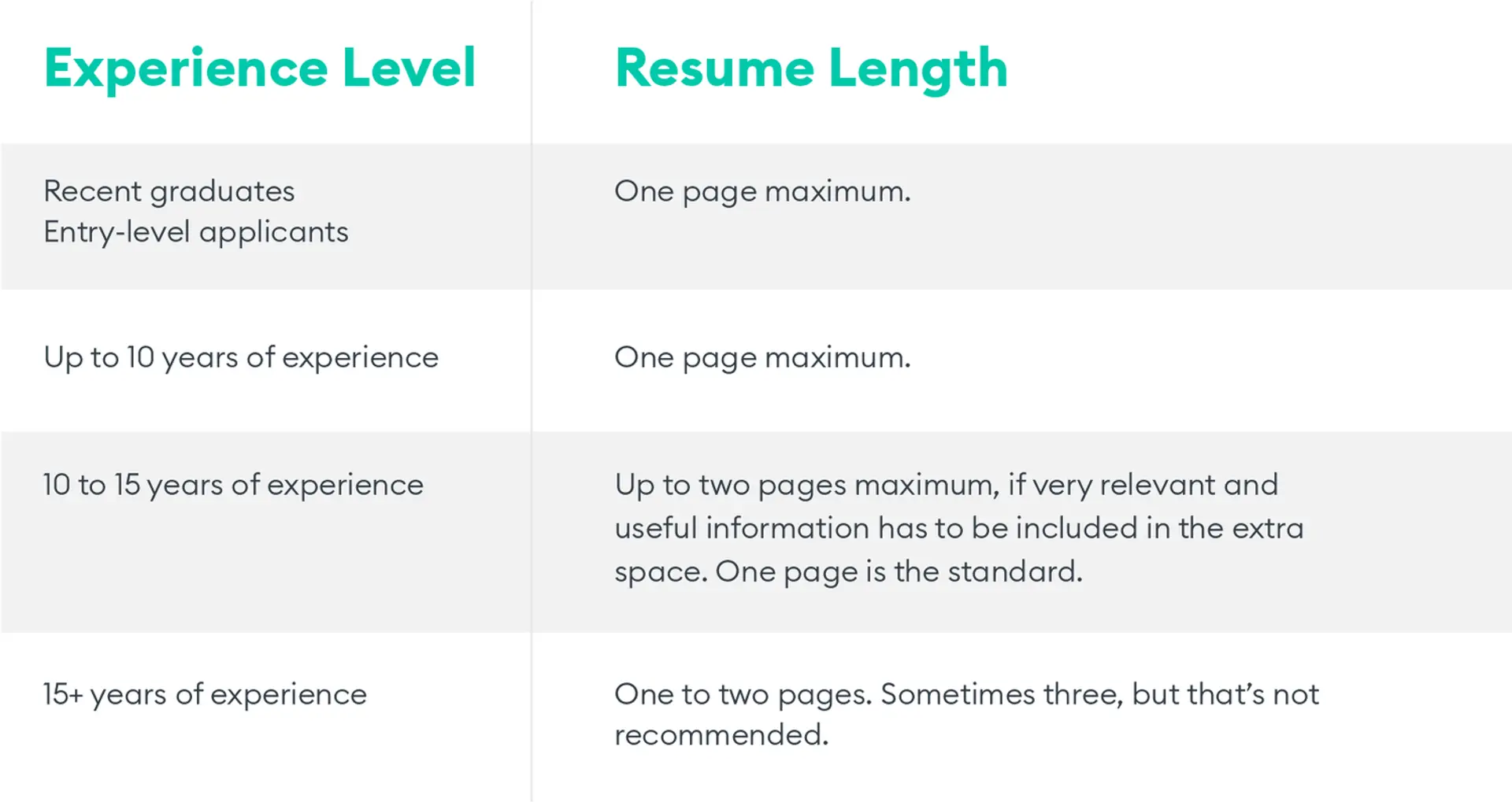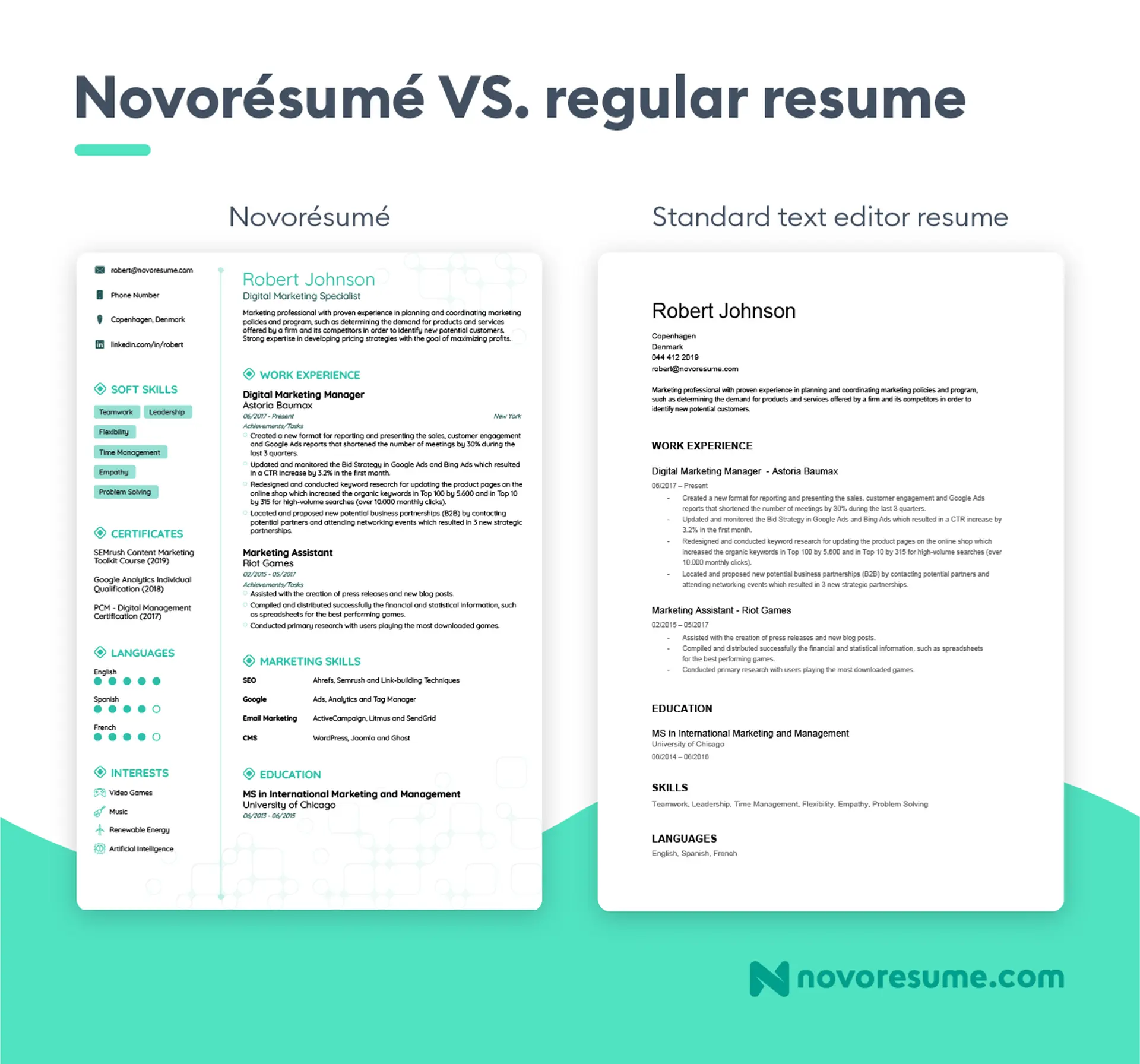
Are you sending out CV after CV, only to hear crickets?
This silent treatment is disheartening and you're left wondering if anyone's even reading the document you spent hours perfecting.
But don't lose hope!
Learning how to get your CV noticed is a game-changer in your job search.
This guide will walk you through nine proven strategies to make your CV stand out from the crowd.
Get ready to transform your CV from overlooked to irresistible!
What Is the Difference Between a CV and a Resume?
In most of the world, people refer to the document that summarizes your professional background as both a CV and a resume.
However, in the United States and Canada, there's a distinct difference.
A resume in the US is a concise, typically one-page summary of your relevant skills and experiences, tailored for a specific job application.
In contrast, a CV is a comprehensive document that details your entire academic and professional history, including all your experiences, publications, and achievements.
In this article, we talk about CV in the European sense. If you want information on how to make a US CV, check out our article on writing an academic CV.

11 Tips to Write a CV That Will Stand Out
Ready to turn your CV from wallflower to spotlight stealer?
We've got you covered with game-changing CV tips and tricks that'll make recruiters sit up and take notice.
Let's dive into these 11 pieces of advice and transform your CV from "meh" to "wow"!
#1. Research the Company
Before sending your CV, become an expert on your target company.
Dig into their website, annual reports, social media presence, and recent news articles. Look for their mission statement, core values, and current projects.
This research helps you find out what hiring managers want and tailor your CV to show genuine interest in the role.
Then, try to mention specific company initiatives or values that align with your experience in your CV.
For example, if the company prides itself on innovation, highlight your creative problem-solving skills.
If they're expanding into new markets, emphasize your adaptability and cross-cultural experiences.
Remember that hiring managers are more likely to notice a CV that speaks directly to their organization's needs and culture.
#2. Tailor It to the Job Description
So, you did your research, but how do you actually write a CV?
One of the first things to keep in mind is that your CV shouldn't be a one-size-fits-all document. Instead, carefully analyze the required skills, experiences, and qualifications listed in each job description and customize your CV to these requirements.
Of course, this doesn't mean fabricating experience – it's about strategically highlighting relevant aspects of your background.
If the job emphasizes project management, bring those skills to the forefront, even if they weren't your primary focus in previous roles.
Also, use similar language and keywords found in the job description. For instance, if they mention "cross-functional team leadership," use that exact phrase if it applies to you.
This way, you're showing that you've put in the effort and understand exactly what the employer is looking for.
#3. Write a CV Headline
Your CV headline is one of the first things hiring managers notice in a resume, so make it count!
This brief statement, positioned right under your name, should capture the hiring manager's attention within two to three sentences. It’s like a trailer for the rest of your CV - the more captivating it is, the better chance you have of piquing the viewer’s interest.
You have two options for your CV headline:
- CV summary. A CV summary is a quick introduction to your professional experiences and achievements. We recommend this for candidates who already have some work experience.
- CV objective. A CV objective is an overview of your career goals and aspirations. We recommend that those with limited or no work experience stick to this option.
Let's look at examples of each:
CV Summary Example:
Results-driven marketing professional with 8+ years of experience in digital strategy and brand growth. Proven track record of increasing online engagement by 200% and driving a 30% boost in conversion rates. Seeking to leverage my expertise in data-driven campaigns and team leadership to drive success as Marketing Director at Company X.
This summary effectively showcases the candidate's experience, key achievements, and career goals. That gives the hiring manager a pretty compelling reason to read the rest of their CV!
Now, let’s look at a CV objective example:
CV Objective Example:
Recent graduate with a degree in Business Administration, seeking an entry-level position in human resources at Company Y. Passionate about employee development and organizational culture. Completed internship in XYZ Company’s HR department, gaining hands-on experience in recruitment and onboarding processes. Proficient in HRIS software and eager to contribute fresh perspectives to a dynamic HR team.
Even with limited work experience, a well-crafted CV objective can make your application stand out by highlighting your relevant skills, education, and career aspirations.
Just remember, your CV headline should evolve with each job application to align with the specific role and company. This personalized touch immediately shows hiring managers why you're an ideal fit for the position. Use strong action verbs and specific achievements to grab attention, and always tailor your headline to the industry and role you're targeting.
#4. Include the Right Keywords
Start by carefully reviewing the job description and company website.
Identify industry-specific terms, technical skills, and soft skills that appear frequently. These are your target keywords.
Make sure to naturally incorporate the keywords throughout your CV – in your professional summary, work experience, and skills section.
For instance, if the job requires "data analysis" and "stakeholder management," ensure these phrases appear in your CV, backed by concrete examples.
But beware of keyword stuffing – use your keywords thoughtfully and in context. Your CV should flow naturally, not read like a list of buzzwords.
#5. Highlight Your Achievements
Don't just list your job duties – showcase your victories!
Employers want to see the impact you've made, not just the tasks you've performed. So, identify your most significant accomplishments for each role and quantify them wherever possible.
Also, consider trying out the PAR (Problem-Action-Result) method to structure these achievements.
So, this is what you shouldn’t do:
Incorrect example:
"Responsible for social media marketing."
Instead, try writing something like this:
Correct example:
"Increased social media engagement by 150% through targeted content strategy, resulting in a 25% boost in web traffic."
Additionally, use powerful action verbs such as:
- Spearheaded
- Transformed
- Optimized
- Revitalized
- Streamlined
And if you're in a field where quantifiable results are harder to come by, focus on qualitative achievements like improving processes, receiving recognition, or taking on additional responsibilities.
By focusing on results rather than duties, you're showing what you can bring to the company.
#6. Back-Up Your Skills with Examples
Anyone can claim to have certain skills, but proving them is what makes a standout CV.
For example, don't just say:
Incorrect example:
"Strong leadership skills."
Instead, provide concrete examples of how you've applied your skills in real-world situations:
Correct example:
"Demonstrated leadership by mentoring a team of 5 junior developers, resulting in 30% faster project completion times."
For technical skills, mention projects where you've applied them, such as:
Correct example:
"Utilized Python to develop a data visualization tool that increased reporting efficiency by 40%."
This approach not only validates your skills but also gives the recruiter a clear picture of how you could apply these abilities in their organization.
Remember to use a mix of hard and soft skills, as most jobs require a balance of both.

#7. Don’t Make It Too Long
When it comes to writing a CV, less is often more. While you might be tempted to include every detail of your professional life, a concise CV is more likely to catch and hold a recruiter's attention, so don’t make it too long.
As a rule of thumb, one page is usually the perfect length, unless you have over ten years of relevant experience.
This doesn't mean leaving out important information, but rather presenting it efficiently and keeping it relevant.
If you have a lengthy work history, consider summarizing earlier positions or omitting those that have nothing to do with the position you’re applying for.
Remember, a CV is not your complete biography. By keeping it concise, you're demonstrating your ability to prioritize information and communicate effectively – skills valuable in any role.

#8. Use a CV Template
A thoughtfully-picked CV template can be a game-changer in making your application stand out.
However, creating a standout CV from scratch can be a time-consuming challenge. Having to struggle with the layout, the margins, and font sizes just to fit everything on one page can get frustrating.
So, why not skip the hassle?
Just try our CV builder!
Novorésumé offers a wide range of free, professionally designed templates that make your job search easier.
Each template is crafted in collaboration with HR experts to ensure your CV is not only visually appealing but also easy to read, ATS-friendly, and polished.
Our templates provide a clean, modern structure that's easy to navigate and gives you consistent formatting throughout your document. Whether you're in a creative field or a more conservative industry, we have options to suit your needs.
Don't settle for a basic black-and-white layout when you can have a CV that truly stands out. Just look at how our CV templates compare to a regular black-and-white text editor CV:

#9. Proofread Your CV
Never underestimate the power of a thorough proofreading. Grammatical errors, typos, or inconsistencies can undermine even the most impressive qualifications.
After you've finished writing, step away from your CV for a few hours or even a day. Then, return to it with fresh eyes and read it carefully, line by line.
Look for spelling mistakes, grammatical errors, and punctuation issues. Pay attention to consistency in formatting, tenses, and style. It's also crucial to double-check all names, dates, and contact information.
While you can use digital tools like grammar checkers, you shouldn't rely on them entirely as they might miss context-specific errors or nuances.
Finally, ask a trusted friend, family member, or colleague to review your CV. A second pair of eyes can often catch mistakes you've overlooked.
#10. Include Optional Sections
While every CV should have essential sections like skills and work experience, adding optional sections can help paint a more comprehensive picture of who you are as a professional.
Consider including:
- Volunteer work. This shows community engagement and can highlight soft skills.
- Publications or presentations. Great for academic or research-oriented positions.
- Languages. In our global economy, language skills are increasingly valuable.
- Professional affiliations. Demonstrates industry involvement and networking.
- Awards and honors. Showcases recognition in your field.
- Relevant hobbies or interests. Can show cultural fit or transferable skills.
Choose optional sections that are relevant to the job you're applying for and add value to your application.
For instance, if you're applying for a marketing role, a section on your personal blog or social media projects could be beneficial.
If you're just starting your career, including relevant coursework or academic projects can compensate for limited work experience.
#11. Keep It up to Date
Make updating your CV regularly a habit, even when you're not actively job hunting. This practice ensures you're always prepared for unexpected opportunities and helps you track your professional growth.
Every few months, or after significant career milestones, review your CV and add new skills, achievements, or responsibilities.
Think of what you might include in your CV. That could be completed projects, promotions, new certifications, or additional training.
Also, make sure to remove outdated information or experiences that are no longer relevant to your career goals.
💡
Quick Tip
Does your CV look empty? Learn how to fix it with our article.
What Is ATS and How to Navigate It
If you followed all the above tips and still feel like your CV vanishes into a black hole after you submit it, you might be dealing with an ATS – short for Applicant Tracking System.
Let's break down what this digital gatekeeper is and how you can make friends with it.
What Is an ATS?
ATS is a software that companies use to manage job applications. When you apply online, the ATS is the first to see your CV. It scans, sorts, and ranks applications before a human ever lays eyes on them.
Companies use ATS simply because they receive too many applications. An ATS helps them:
- Automate the hiring process, reducing time and effort.
- Quickly sort and filter large volumes of CVs.
- Keep all candidate information in one place, ensuring nothing gets lost.
- Standardize evaluations for fairness and objectivity.
- Stay compliant with employment laws and regulations.
- Streamline the application process, improving the candidate experience.
- Provide analytics for data-driven hiring decisions.
- Reduce recruitment costs by automating various tasks.
How to Make Your CV ATS-Friendly?
Navigating the ATS might seem tricky, but think of it as your first challenge to landing the job. By crafting an ATS-friendly CV, you're not just passing a test – you're showing you can adapt to new technologies.
So, how do you make your CV ATS-friendly? Follow these tips:
- Keep it simple. Stick to standard fonts and basic formatting. Fancy designs might look great to humans but can confuse ATS software.
- Use common section headings. "Work Experience," "Education," and "Skills" – these are signposts for the ATS.
- Mirror the job description. Remember those keywords we talked about earlier? This is where they really shine. Use phrases from the job post in your CV.
- Avoid images and graphics. Most ATS can't read these so stick to plain text.
- Save in the right format. Unless otherwise specified, .docx or .pdf are usually safe bets.
- Don't try to outsmart it. Keyword stuffing or using white text to hide keywords won't work and might get you blacklisted.
- Use an ATS-friendly template. Save yourself some time by using a tried-and-tested ATS-friendly CV template. This way, you can focus on making your CV’s content shine instead of worrying about the format and design.
💡
Quick Tip
Did you know that hiring managers need 6 seconds to determine whether they’ll consider your application? Read our article and learn how to pass the 6-second resume test!
9 Most Common CV Mistakes
Now, let's talk about the mistakes that can derail even the most promising applications.
These common errors make hiring managers set aside CVs that might otherwise shine.
So, let’s dive into some of the most common CV mistakes that you should avoid at all costs:
- Including irrelevant information. Your summer job as a lifeguard probably won't help you land that accounting position.
- Leaving unexplained employment gaps. Don't leave employers guessing – address any gaps in your work history head-on so they don’t assume the worst.
- Using an inappropriate email address. "PartyAnimal123@email.com" doesn't exactly scream "professional." Make sure you go for something that’s easy to spell, like a combination of your first and last names. (E.g.: doe.john123@novoresume.com)
- Lying or exaggerating. Honesty is always the best policy – lies have a way of unraveling during interviews, and things will get really awkward from there
- Not checking your contact information. Double-check those digits! A typo in your phone number or email address could cost you the job. After all, the hiring manager can’t invite you over for an interview if they can’t reach you.
- Including a photo. In a lot of countries, this can work against you. In fact, it’s even illegal in the USA, Canada, and UK but it’s the norm to include a picture of yourself in most of Europe and Asia. Make sure you check what the regulations are in the country you’re applying to work in.
- Using cliché phrases. "Team player" and "hard worker" are so overused, that they lose meaning – unless you can back them up with concrete examples.
- Focusing too much on what you want. The hiring manager knows you want a job, so repeating that all over your CV is pointless. Your goal should be to convince them that you’re the right person for the specific job you’re applying for. Highlight your skills, achievements, and relevant experiences so they see what you can offer their team.
- Including references if not directly asked to do so. Save that valuable space for showcasing your skills.
Key Takeaways
And we came to the end!
By now, you're well-equipped with the know-how to create a CV that'll turn heads and open doors.
But before you go, let’s quickly recapitulate what we covered:
- Tailor your CV to each job application, using keywords from the job description and researching the company.
- Highlight achievements and quantifiable results rather than just listing job duties.
- Use a clear, concise format with a compelling headline, and keep the length appropriate (typically 1-2 pages).
- Ensure your CV is ATS-friendly by using standard formatting and section headings.
- Avoid common mistakes like typos, generic content, and including irrelevant information.
